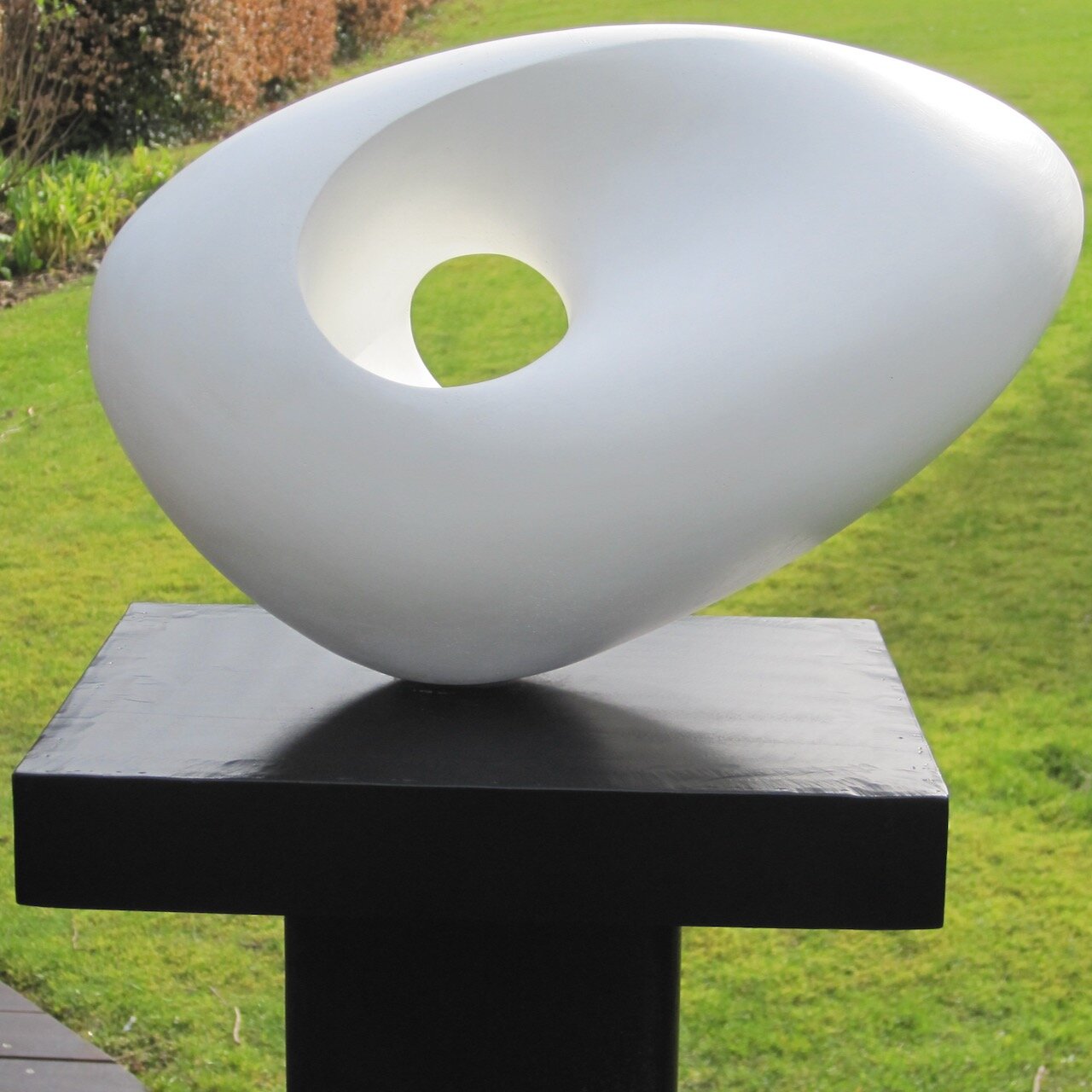Click on the image to link to a more detailed exploration of the sculpture on ropoBlog
"Acceptance": 25 x 40 x 35 cm ; Plaster, gesso, shellac ; edition of 8 >>>>>>>>>> My interest in exploring this theme stems primarily from my overall interest in how emotions and other states of mind can be expressed in abstract forms. Recent life events did force the issue on me rather, giving me the opportunity to contemplate both Acceptance and Patience. The process of acceptance is indeed a fascinating thing, something we are constantly faced with in life and, if achieved, seems to me to be the key to inner calm/harmony, which in turn is the key to a fulfilling inner life. As the Celtic verse says: … the serenity to accept the things you cannot change, The courage to face the things you can, And the wisdom and grace to know the difference. Accepting things you cannot change: requires in the first instance the acknowledgment that you are faced with a situation that you can’t change. Once you come to realize that, you have a choice between negativity, i.e. defeat, submission, and/or absolute, negative resignation, or positivity, which to me is vital in the process of acceptance and which is what makes it acceptance as opposed to the aforesaid negatives. This positivity takes the form of finding a way of ‘making the most of’, even turning ‘to your advantage’; a seeing a way of coming out better for it. Which, interestingly, means that you are actually to some extent turning this into a ‘thing you can change’. So the different phases one moves through in this process of acceptance can be outlined as follows: initial resistance – how ever strong – even rejection/repulsion some times, and possibly/probably inner turmoil, then a quiescence in the maelstrom, the realization that this is a thing you cannot change, which leads to the serene state of acceptance: a taking or receiving willingly, sometimes with a degree of resignation (which I feel needs to remain positive, otherwise acceptance turns into merely tolerance), a calmness and composure, a constancy, serenity. Now how do you express that in abstract sculpture? Convex, i.e. volume, bulging, if too strong, expresses rejection/resistance. A concave too deep gives the feeling of submission, which is negative; there has to be positivity for there to be true acceptance. Concave, if weighted appropriately – and just a few millimetres can make all the difference – expresses containment, not forced, just gentle.
"Day Breaks Over the Ocean" : 40 x 30 x 20 cm ; bronze - edition of 8 ; plaster, gesso - edition of 8 : (base - steel or granite) - Scale-up in bronze or marble resin
"You Can't Stop the Waves But You Can Learn to Ride Them" : 55 x 45 x 35cm ; bronze - edition of 8 ; bronze resin - edition of 8 ; (base - steel or granite)
"Inner Room": alabaster on granite >>>>>>>>>> Inner Room is about the inner space within the prolate spheroid - the egg, symbol of new life - and the Möbius, its continuous edge offering a constant and secure sanctuary: enter the calm of your inner room to reflect, to contemplate, to regenerate. (Written as my Artist Statement for the Brighton HOUSE Open Exhibition on the theme of 'Regeneration')
"De la concentration vers l’épanouissement - Concentration Brings Expansion" : alabaster on oak >>>>>>>>>> The theme of this piece – 'concentration brings expansion' – slowly matured as I worked, and began to manifest itself clearly as I carved deeper and deeper into the spiral and sought a way sculpturally to come out of the depth. It struck me that this is what we do when we're faced with a challenge: we concentrate, delving down to find and then to harness our inner forces thus allowing us to surmount whatever stands before us. This process brings us to 'expansion'. Then, as I worked, I began to think about how easy it is in our present-day lives to overload ourselves with pre-occupations, weighing ourselves down with continually 'doing', continually 'seeking', and about how, by concentrating our outlook, we can harness our energies and inner forces to focus on what is truly important to us and begin to free ourselves, open ourselves up, blossom and grow. Dispersion renders ineffectual; concentration brings expansion. Just a brief explanation of the French title: I've given this piece its main title in French because, as I thought about the theme, the word 'épanouissement' came to mind, a beautiful word which encompasses the idea of blossoming, blooming, opening up - like a bloom in spring - as well as developing, expanding and finding fulfilment. The literal translation is 'from concentration towards l’épanouissement'.
"Pietra Santa" : Carrara marble (Pietrasanta, Tuscany) on granite





